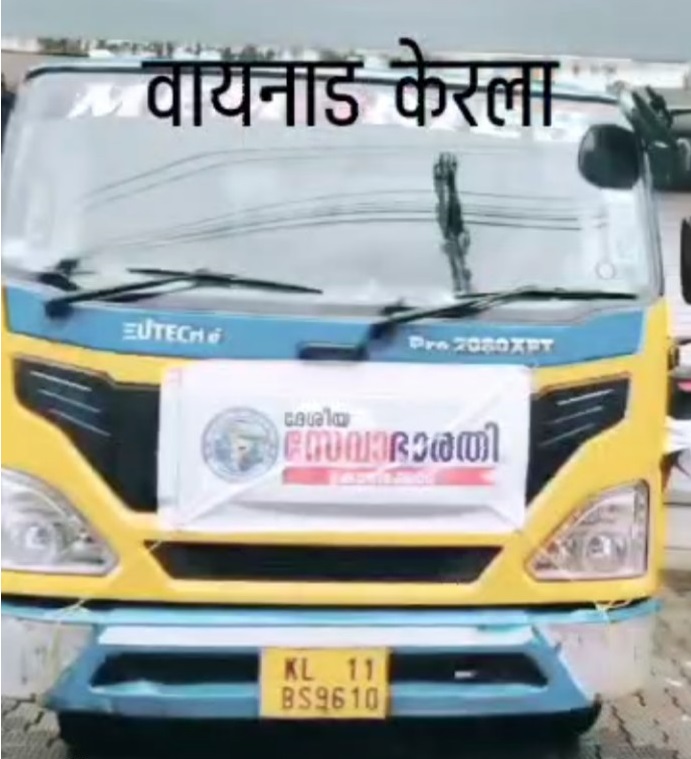Centenary Resolution: From Shakha Expansion to Social Transformation
Part 3: RSS Centenary Sankalp Blog Series
Centenary Resolution And Role of Shakha
Among the five goals established at the historic Centenary Resolution gathering in Bengaluru, the first and most fundamental objective is “Shakha Expansion.” This represents the transformation of Dr. Hedgewar’s 1925 vision into the reality of 2025. In the Centenary Resolution, Shakha expansion means spreading that spiritual and cultural awakening which establishes centers of character building and sanskar formation in every settlement, every village, every city of India. This is not merely geographical expansion, but the foundation stone for building a “Harmonious and Organized Hindu Society.”
Philosophy of Shakha in the Centenary Resolution
In the RSS’s centenary year, a Shakha is not merely a place—it is a philosophy, a way of life. When we speak of Shakha expansion in the Centenary Resolution, we speak of expanding that daily spiritual practice which prepares every swayamsevak not only physically but also mentally and spiritually.
Every activity that takes place in each Shakha—from prayers to games, from songs to intellectual discussions—represents different dimensions of character formation. The prayer “Sarve Bhavantu Sukhinah Sarve Santu Niramayah” that begins every Shakha is not merely a ritual, but the cultivation of that universal vision which is instilled in the mind of every swayamsevak.
Centenary Vision: Analysis of Current Shakha System
In RSS’s centenary year, when we assess the current situation, we find that today over 60,000 Shakhas are operating across India. This figure represents the fruit of 100 years of continuous spiritual practice that began with a small Shakha in Nagpur in 1925. However, when we view this in the context of India’s vastness, the necessity of the Centenary Resolution becomes clear—much work still remains.
India has over 600,000 villages, and the goal of reaching every district, every tehsil, every panchayat is at the center of Shakha expansion. The situation of Shakhas in urban areas is relatively better. In metropolises like Mumbai, Delhi, and Bengaluru, having a Shakha in every neighborhood has almost been realized. However, in rural India, especially in remote areas, the challenge of Shakha expansion still persists.
Strategy for Geographical Expansion
The Shakha expansion goal set in the Centenary Resolution has a clear strategy. This strategy is not focused merely on numerical growth but also emphasizes geographical reach and social impact.
Priority Areas: Beginning with Villages
Rural India tops the priority list for Shakha expansion. Even today, 70% of India’s population lives in villages, and if we are to build a “Harmonious and Organized Hindu Society,” it must begin from the villages.
Establishing Shakhas in villages has its own special challenges. There is a shortage of educated pracharaks, transportation problems, and sometimes social resistance is encountered. However, RSS’s experience shows that once a Shakha is established, its acceptance in villages is often better than in cities.
Special Initiative in Tribal Areas
Tribal areas hold special significance in RSS’s Shakha expansion. The work being done in these areas through Vanvasi Kalyan Ashram needs to be connected with the Shakha system as an important part of the Centenary Resolution.
Shakha expansion among tribal communities in Jharkhand, Chhattisgarh, Odisha, and northeastern states is not only an organizational necessity but also extremely important from the perspective of national unity. Here, the form of Shakha is slightly different, incorporating local traditions and languages.
Strategic Importance of Border Areas
Shakha expansion near India’s international borders holds special significance. Establishing Shakhas in villages and towns located on the borders with Pakistan, China, Bangladesh, and Myanmar is also necessary from a national security perspective.
In these areas, the work of Shakhas is not limited to character building but also plays an important role in awakening national sentiment and finding solutions to problems coming from across the border.
Urban Expansion: New Challenges
Shakha expansion in urban areas has its own distinct challenges. The biggest problem here is space. Land is expensive in metropolises and open spaces are limited. Additionally, time constraints in urban lifestyles are also a major obstacle.
Shakha in Apartment Culture
In modern cities, the trend of apartments and gated communities is increasing. The traditional Shakha model doesn’t work here. New experiments are needed for this.
Small Shakhas are now being conducted in community halls of large housing complexes. Shakhas are expanding in the form of special programs for children and family gatherings.
Entry into Corporate World
A new direction in urban expansion is the presence of Shakhas in the corporate world. Small Shakhas are being organized at special times for swayamsevaks working in large companies.
This experiment is particularly working in IT and service sectors, where emphasis is placed on intellectual and spiritual content for educated youth.
Transformation of Shakha in the Digital Age
The COVID-19 pandemic brought revolutionary changes in Shakha operation methods. The experiment of digital Shakhas is now taking permanent form.
Online Shakha Model
Shakha activities are being conducted through WhatsApp groups, Zoom meetings, and YouTube channels. This is especially beneficial for those who cannot attend regular Shakhas due to geographical distance or time constraints.
For Non-Resident Indians, this digital Shakha is a new possibility. A person living in America can connect with any Shakha in India and participate in daily prayers.
Possibilities of Hybrid Model
Future Shakhas will probably not be entirely physical or entirely digital, but a combination of both. A model of physical Shakhas some days of the week and digital Shakhas other days is being experimented with.
This model is proving useful especially for working professionals and students.
Quality vs Quantity: The Challenge of Balance
The biggest challenge in Shakha expansion is maintaining balance between quantity and quality. Hastily opened Shakhas, if not properly managed, can damage RSS’s image.
Need for Pracharak Preparation
Every new Shakha requires a capable and trained Pracharak. The process of preparing Pracharaks takes time, and this is the factor that controls the pace of Shakha expansion.
Becoming a Pracharak in RSS is not just an administrative post, but a way of life. A Pracharak is someone who dedicates their life to RSS work.
Development of Local Leadership
For sustainable Shakha expansion, development of local leadership is essential. Every new Shakha must give responsibility to local people so it can function without external support.
This process is slow but necessary for long-term success.
Geographical Challenges and Solutions
India’s diversity presents numerous challenges for Shakha expansion.
Difficulties in Mountainous Areas
In hilly regions of Himachal Pradesh, Uttarakhand, and northeastern states, establishing Shakhas is difficult. Here there are scattered populations, harsh weather, and transportation problems.
In these areas, mobile Shakha experiments are being conducted, where Pracharaks go to different villages to conduct weekly Shakhas.
Characteristics of Desert Areas
In desert areas of Rajasthan and Gujarat, water scarcity and extreme weather conditions create difficulties in Shakha operation.
Here, adjustments to Shakha timing must be made according to seasons and weather.
Success Stories
There are some inspiring success stories of Shakha expansion that show how Shakhas can be established even in remote areas with the right strategy.
Kerala’s Experiment
In a state like Kerala where social and political conditions are challenging, remarkable success has been achieved in Shakha expansion. Here, Shakhas have been made acceptable through cultural and educational approaches.
Progress in Northeast
Shakha expansion has occurred in northeastern states despite linguistic and cultural diversity. Here, a Shakha model has been prepared incorporating local customs and traditions.
Future Goals and Strategy
The goals set for Shakha expansion under the Centenary Resolution are ambitious but achievable.
Vision for 2030
The goal for the next five years is to establish at least 50 Shakhas in each district. This means having Shakha presence at every tehsil level.
Long-term Goal for 2050
The long-term vision is to establish Shakhas in every panchayat. This is a big goal but not impossible.
Metrics and Evaluation
To measure the success of Shakha expansion, numbers alone are not sufficient. Some other metrics are also important:
Regularity as a Metric
The biggest measure of a Shakha’s success is its regularity. A Shakha that continues to operate regularly is successful in itself.
Growth in Swayamsevak Numbers
Continuous growth in the number of swayamsevaks attending the Shakha is also a measure of success.
Social Acceptability
The acceptance and respect of the Shakha in the local community is also an important metric.
Conclusion: From Centenary Resolution to Social Transformation
Shakha expansion in the Centenary Resolution is not merely geographical spread, but the propagation of those sanskars and value systems necessary for building a “Harmonious and Organized Hindu Society.” When we recite the prayer “Sarve Bhavantu Sukhinah,” it is not merely a ritual, but the practice of that universal vision which is instilled in every Shakha, in every swayamsevak’s mind.
In RSS’s centenary year, this resolution is full of practical challenges, but with Dr. Hedgewar’s 1925 dream and today’s dedication of millions of swayamsevaks, achieving this goal is possible. Every new Shakha is a new fulfillment of the Centenary Resolution, a new center from which waves of social transformation will spread.
In the next blog, we will see how “Qualitative Improvement” is necessary along with Shakha expansion and how quality can be maintained along with quantity. Because ultimately, the goal is for every Shakha to become that effective center of character building which flows the stream of transformation from individual to society and from society to nation.
This blog is the third part of the “RSS Centenary: Five Goals for the Next Century” series.
Feature Image: Click here to view the image.
Watch the Video
Previous Blogs
Related Blogs
- https://hinduinfopedia.in/nathuram-godse-murderer-patriot-or-fractured-youth/
- https://hinduinfopedia.in/gandhis-murder-was-nehru-involved/
- https://hinduinfopedia.in/waqf-act-debate/
https://hinduinfopedia.org/wp-content/uploads/2024/08/Waynad_RSS_Support.jpg



Leave a Reply